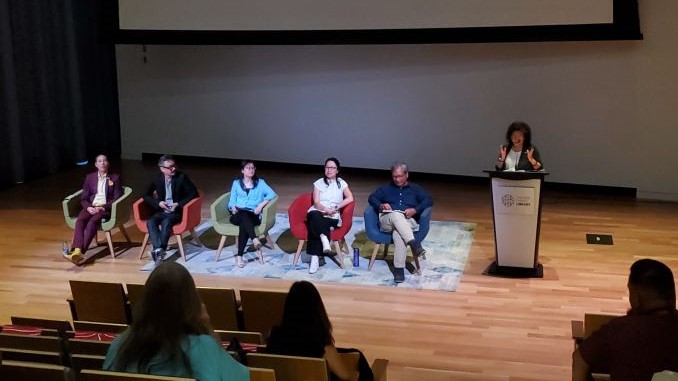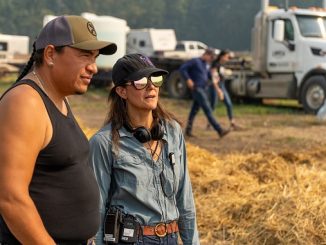What Flowers They Bloom is a documentary that recently aired in both the Metro Cinema in Edmonton and at Central Library in Calgary. Directed by C. Hudson Hwang, What Flowers They Bloom addresses the ever prominent topic of Asian hate and discriminatory behaviour through a thought-provoking and eye-opening documentary. In addition to covering such a pertinent topic, lays an underlying significance of utilizing art forms such as filmmaking to bring another voice into the conversation.

What was the film about?
What Flowers They Bloom featured a floral shop owner, Andy, who was a victim of stigmatized hate that had been derived from the COVID-19 pandemic. The film brought insight into the reality of being faced with anti-Asian sentiments and the fact that many hate crimes come unexpectedly. Oftentimes, we see these situations broadcasted on social media or on local news stations and oftentimes, we become so accustomed to hearing about these hate crimes that acceptance starts seeping in. This documentary demonstrates an active effort to combat any sort of tolerance for these actions.
Ever since the pandemic, the filmmaking industry had been put on hold. A period in time where Asian hate crimes increased 300% and when not many were able to tell their story laying beneath media coverage.

After-screening insight
In the panel following the screening, Director Hwang went on to discuss his goal of bringing more awareness into anti-Asian sentiment. He explained how he wanted to tell a story where others are unable to share their own. His goal of enhancing awareness revolved around the question of “How [can we] drive more empathy?” Hwang also stressed that “We are not fighting to be a dominant race in a broken structure, but to strive towards equity.”
The voice of art
By showing what had happened to Andy in the floral shop through a documentary format, it brings a first-hand perspective into the conversation. Essentially, it puts viewers into the eyes of a victim on the receiving end of racial hate. The filmmaking industry is a powerful tool in encouraging conversation, a crucial step in the “Healing process” as ACCT Founding Board Chair Teresa Woo-Paw stated.
The film brought insight on what defines racism and the struggle individuals face when debating on what is worth reporting. “Only one per cent of hate crimes are ever reported” states Rosalind Kang. Kang explained how the rest usually remain silent as it is the easier option. Her statement further demonstrates the necessity of having a voice. Art becomes a valuable instrument in implementing a voice that many struggle to obtain.
The documentary had brought important layers to Andy’s story, details might be glossed over in simple media coverage. Having his story play out on the big screen allows audience members a chance to delve into not just why the conversation needs to start but who it pertains to. Andy described his encounter with racism as something that will “scar [his] life”. He has family and children. The same family and children can easily become the next victims of racial hate. The film is a way of showing victims without a voice, hope while encouraging allies of anti-racism to understand the value of utilizing their voices.
Art, at its core, has always been meant to drive emotion and some sense of connection. The news and media, at its core, is meant to inform. In What Flowers They Bloom is a demonstration of how both aspects can be utilised in the film industry. Director Hwang was able to turn Andy’s story into one that does not look for sympathy but drives empathy. He managed to bring in elements of art that makes a piece enticing to view, capturing Andy’s whirlwind of emotions and delivering them to the audience. All of these aspects are enhanced by the polished cinematography of Viktor Cahoj.
Art is a highly influential tool. It is more than just a decorative piece as it can come in many forms, What Flowers They Bloom being a prime example. Employing art, or in this case, the film industry, to direct these topics, brings a sense of self-awareness into any and all viewers. As Doctor Carmen Logie quotes “Anti-racism has to be reflected in your actions.”
The team of What Flowers They Bloom had turned an art form into a bridge of connection, conversation, and change. It brought the audience into Andy’s world, and when they take their leave, they can bring something back into their own.
For more information on what efforts are being implemented in the fight against anti-Asian hate, visit the ACCT Foundation website and social media.




